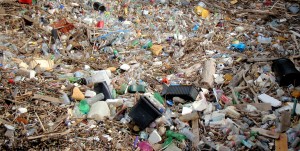How to solve a problem like waterway litter?
 It’s the question we all want to answer; after 20 or more years of taking litter out our waterways, is there a way to finally knock this problem on the head? On the 11th November, 15 of our volunteers came to a pub in Bermondsey to discuss where we are up to and where to go next. A quick reminder of what our waterways were like 15 years ago left us in no doubt that big progress has been made. In 2000, it was common for large tracts of foreshores on the Thames to be so covered in plastic bags that you would be forgiven for considering them part of the ecosystem, they were everywhere. Today, litter on the Thames is increasingly restricted to particular hotspots, while the vast majority of our shores remain clean. And yet, these hotspots are replenished each time the high tide floods in, much of this is now in the shape of tiny pieces ofplastic fragments or polystyrene. We have moved away from the ‘Era of the Shopping Trolley’ and arrived firmly in the ‘Age of Plastic’. And despite the progress, the trade-off is not necessarily all for the better.
It’s the question we all want to answer; after 20 or more years of taking litter out our waterways, is there a way to finally knock this problem on the head? On the 11th November, 15 of our volunteers came to a pub in Bermondsey to discuss where we are up to and where to go next. A quick reminder of what our waterways were like 15 years ago left us in no doubt that big progress has been made. In 2000, it was common for large tracts of foreshores on the Thames to be so covered in plastic bags that you would be forgiven for considering them part of the ecosystem, they were everywhere. Today, litter on the Thames is increasingly restricted to particular hotspots, while the vast majority of our shores remain clean. And yet, these hotspots are replenished each time the high tide floods in, much of this is now in the shape of tiny pieces ofplastic fragments or polystyrene. We have moved away from the ‘Era of the Shopping Trolley’ and arrived firmly in the ‘Age of Plastic’. And despite the progress, the trade-off is not necessarily all for the better.
Paul Clark (Natural History Museum) knows about plastic; when attempting to trap Chinese mitten crabs, his nets became clogged with litter bumping along the bottom of the river. This proved for the first time something we all knew must be happening but had never witnessed; that the bottom of the Thames is alive with plastic litter merrily making its way out to sea. His research partner Dave Morritt (Royal Holloway University) shed light on the question of how this impacts our wildlife revealing that at least three of our estuarine species regularly ingest microplastics; flounder, Chinese mitten crabs and (to a lesser extent) smelt.
So our target over the years is changing and discussion turned to what is to be done, with one thing very clear; greater networking and collaboration of volunteers is crucial. Bringing ‘friends of’ and user groups, organising clean-ups and contact with volunteers trained in litter surveying will help us improve our knowledge of what types of litter we are dealing with. Organising local people and river users into Litter Hubs could create greater momentum around tackling litter locally, applying the information from our surveys. Currently our survey method is only set up for the Thames foreshore, so we need to modify our monitoring to work on tributaries and canals to include more groups. Volunteer Silvia Colosseus suggested a new area of concern could be a reduction in bin-emptying by councils due to funding cuts.
Litter will continue to be an area of focus for Thames21 and we will be looking to get our volunteers to interact with the issue in creative ways – in a sense, devolving the control of the subject to those communities affected by the problem. Sound interesting? Think this is fight you have stomach for? Then you are exactly who we need – get in touch and jump on board!
